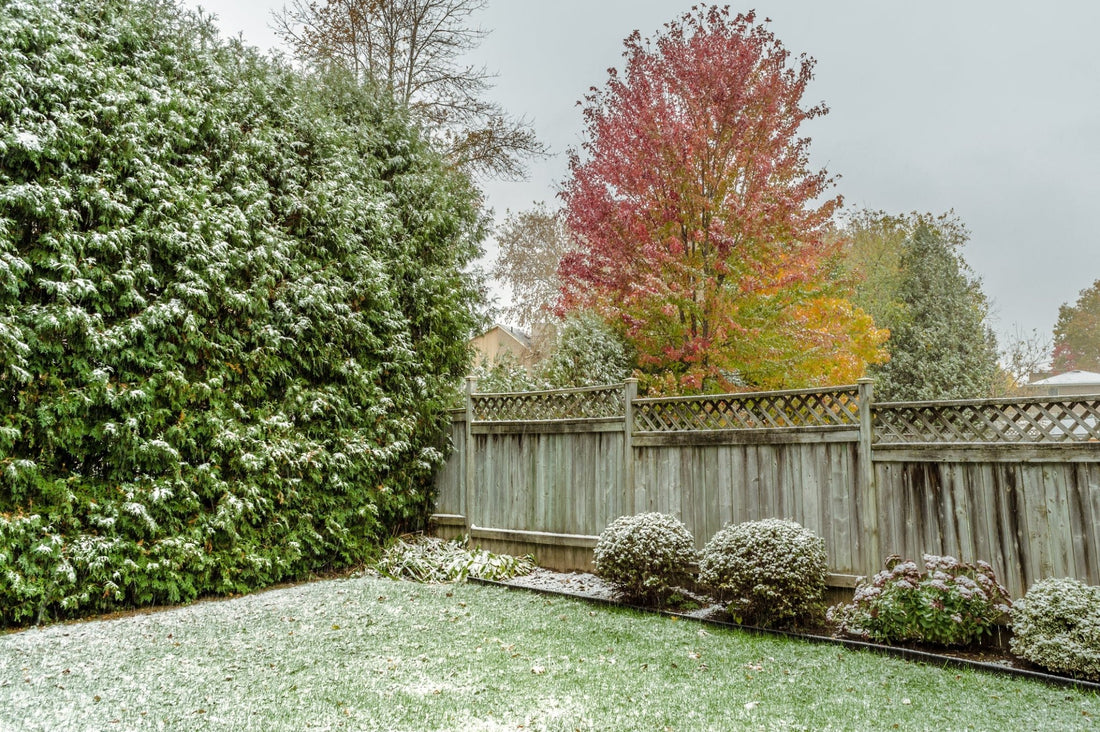How to Close Your Garden for the Winter (Without Losing Your Gardening Mojo)
Ah, winter—the season where the garden goes to sleep and you (finally) get a break from weeding. But before you swap your gardening gloves for mittens, there’s one last thing to do: closing your garden. If you're in Georgina, this is a must. Let’s dive into why it's important to give your garden a proper send-off and how to do it without breaking a sweat.
Why Close Your Garden for Winter?
Think of closing your garden like tucking it in for a long nap. It’s not just about aesthetics or keeping your neighbours from side-eyeing your bedraggled flower beds. There are real benefits to putting your garden to bed properly:
- Protect plants from winter damage: Prepping your garden keeps plants from getting frostbite—yes, plants can suffer, too.
- Pest control: Clearing out debris helps reduce places for pests to overwinter, saving you from spring infestations.
- Better spring growth: It sets the stage for an easier, more successful growing season next year. Less work in spring? Yes, please.
- Supports wildlife: Leaving certain plants standing provides shelter and food for critters like birds and beneficial bugs.

How to Close Your Garden: The Step-by-Step Breakdown
There’s a method to the madness of garden closing. Here’s how to tackle each section of your garden, so you can ensure everything is winter-ready.
1. Shrubs
Most shrubs are pretty tough, but they still need a little TLC before the snow hits.
- Water deeply before the ground freezes, especially evergreens like cedars and yews. This helps them stay hydrated through the dry winter months.
- Mulch around the base with 2-4 inches of organic mulch (wood chips, shredded leaves) to insulate roots and retain moisture.
- Prune damaged or dead branches, but save major pruning for late winter or early spring. Overzealous cutting can expose plants to more winter damage.
- Burlap wrap tender shrubs if they’re exposed to harsh winds or salt spray, like boxwoods or certain roses.
2. Perennials
Perennials will reward you for your efforts by coming back year after year, but they need a little attention now.
- Cut back spent growth on most perennials, leaving about 2-3 inches above the ground. This tidies up the garden and prevents diseases from overwintering.
- Leave some standing (more on this below), especially plants with seed heads like coneflowers and ornamental grasses—they add winter interest and are great for wildlife.
- Mulch the base with organic material to insulate the soil and protect the root system from freeze-thaw cycles.
3. Vegetables
Vegetable beds need a good cleaning to prevent pests and diseases from sticking around.
- Remove all dead plants and leftover veggies. Don't leave anything rotting in the ground—it’s a buffet for pests!
- Compost healthy plant debris, but toss any diseased plants in the trash to avoid contaminating your compost.
- Cover crops: Consider planting a winter cover crop like rye or clover to protect and enrich the soil over winter.
- Mulch bare soil with straw or leaves to prevent erosion and keep the ground from freezing and thawing too much.
4. Annuals
The sad truth: annuals don’t come back, no matter how much you plead. Time to say goodbye.
- Pull out spent plants and either compost them (if they’re disease-free) or toss them in the garbage.
- Plan ahead: Take note of what worked and what didn’t this year so you can tweak your plantings for next spring.
5. Lawn
Your lawn also needs some winter prep to keep it healthy and happy.
- Rake up leaves to prevent mould and rot from damaging your grass.
- Mow one last time: Set your mower on a higher setting (about 3 inches) to prevent it from being matted down under the snow.
- Aerate to loosen compacted soil, allowing nutrients and moisture to penetrate.
- Fertilize with a slow-release, fall-specific fertilizer to give your grass a boost before winter hits.

Plants to Leave for Winter Interest and Wildlife
Before you start hacking everything down, let’s talk about the unsung heroes of the winter garden—the plants that keep things interesting when everything else is covered in frost. Plus, these plants pull double duty by providing food and shelter for wildlife.
Perennials to Leave Standing:
- Coneflowers (Echinacea): Their seed heads are not only architectural but also a feast for birds like finches.
- Black-Eyed Susans (Rudbeckia): Another great food source for birds, with the added bonus of standing tall through the snow.
- Ornamental Grasses: Think switchgrass or miscanthus—these grasses add movement and sound to a winter garden while offering shelter to critters.
- Sedum (Autumn Joy): Its sturdy stems and flower heads look stunning when covered with frost, and they provide food for birds.
Shrubs for Winter Interest:
- Red Twig Dogwood: The bright red stems of this shrub are eye-popping against a snowy backdrop.
- Winterberry (Ilex verticillata): This native shrub produces vibrant red berries that stay on the branches well into winter, offering a food source for birds.
- Hydrangeas: Leave the flower heads on paniculata varieties for a stunning snowy display. Plus, they offer shelter for small animals.
Bonus Tips for a Successful Garden Close-Up
- Turn Off and Store Your Irrigation System: Drain hoses and store them inside to avoid cracking from frozen water. For sprinkler systems, make sure to blow them out properly.
- Tidy Up the Garden Beds: Remove weeds, debris, and any spent plants that could harbour pests or diseases. The cleaner your garden is in the fall, the healthier it will be in the spring.
- Label and Store Tools: Clean, oil, and sharpen your garden tools before storing them for winter. Store in a dry place to avoid rust.
- Plan for Next Year: Use this downtime to plan your spring garden. Take notes on what worked, what didn’t, and make any changes you want to implement next season.
So, there you have it, closing your garden for winter is less about saying goodbye and more about prepping it for an even better spring. A little effort now will make sure your plants, soil, and even wildlife are set to weather the cold months. And who doesn’t love the sight of snow-dusted seed heads and red berry-laden branches when the world is frozen?
Happy gardening!





1 comment
Thank you.
Efficient, clear and concise information.